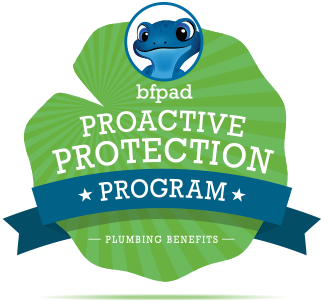
Possible Issues With Non-Professional Water Heater Installation | Richardson, TX
A new water heater installation can be quite expensive, which is why some DIY-ers consider installing their new water heater themselves. However, installing a water heater requires more than basic plumbing expertise. There are multiple reasons why it is better to rely on a professional plumber to get the job done. Improper installation carries both safety and financial risks. Here are some of the most common mistakes that people make regarding the installation of a water heater:
1. Installing a new heater before it is needed.
Even if you’re confident that you can safely pull off a water heater installation, without the advice of a professional you risk installing a water heater before it is time. A poor diagnosis or lack of knowledge about the original water heater’s issue can result in premature replacement. Components, such as the heating element or anode rod, may have stopped working, causing you to believe that your water heater is totally kaput and has to be completely replaced. However, these components can be repaired or replaced individually with a professional’s help.
If you ask a professional plumber to investigate your water heater’s condition, you’ll get accurate feedback as to the work required to restore consistent hot water to your home. New water heater installation may not be the course of action recommended by your plumber. Instead, they may be able to repair it. A less expensive, less disruptive activity!
2. Installing the wrong size.
A traditional water heater with a storage tank has its capacity measured in gallons. You may risk going overboard when upgrading its size, resulting in an inefficient water heater that you’re not getting optimal use out of. A 50-gallon tank is plenty for most small households of up to four people, though a one- or two-person household may get by with a 30- or 40-gallon heater. A 60-gallon water heater installation may be better for you if you have a larger family and a higher water usage.
Bigger homes might need a larger water heater fitted, or their existing water heater supplemented by smaller point-of-service water heaters that serve individual rooms, such as the family bathroom.
If you’re converting from a traditional storage tank heater to a tankless model, you risk incorrectly calculating the size of the on-demand heater needed. Their capacity is measured in heated gallons-per-minute and often advertise a flow rate, rather than an overall capacity. A professional can help you decide if the water heater installation you’re looking at converting to will provide you with what you need.
Without a professional assessment of your home’s water demand, you risk installing an undersized or oversized water heater, ultimately making a costly, ineffective investment.
3. Incorrect, unsafe installation.
The International Code Council (ICC) provides the standard for residential and commercial building codes used in most cities throughout Texas, and the wider U.S. There are code sections dedicated to prohibited areas, accessibility requirements, and more. Without familiarity of the plumbing and building codes in your area, you risk performing an illegal water heater installation. Not only could this affect your insurance and warranty, but it may cause legal issues upon the resale of your property.
Some requirements that you may be unaware of include:
- Housing in a sealed enclosure is required if installing in a living space
- A level service space of at least 30″ x 30″ is need in attic installations
- Minimum attic opening of 22″ x 30″ is required
- Gas connections must be visible and accessible
- Gas lines must be bonded and grounded
- T&P valve must be visible
Replacing an existing water heater requires heavy lifting and awkward maneuvering of both the old and new water heater installation. If your water heater is in an attic, you’ll need to consider how you’re going to get the unit through the attic opening. If you typically access your attic via a pull-down ladder, you’ll have an even tighter space to work with. Plus, the ladder is not designed to hold the weight of a water heater.
So, you’ll require a safe way to hoist your water heater. A typically 50-gallon water heater can weigh up to 150 pounds, so it’s definitely not a one-person job. You risk damaging yourself and your water heater if you don’t lift the item correctly. A professional crew will often use rope hoists to safely transport your water heater without damage.
4. Installing without a plumbing permit.
Texas water heater installation requires a permit. Agencies that deal with supplying the permit are strict about code enforcement, and inspectors are often sent to ensure the installation was completed correctly. To avoid this hassle, some might consider installing a water heater unprofessionally, without a permit, to avoid the headache of applying for a permit and risking inspections. Permits also cost money and can influence your property’s taxes, so if you’re trying to save money you might be considering skipping this step.
However, it really is necessary! Anyone installing a water heater, whether it’s the homeowner, plumber, or builder, needs to prove they can meet the installation requirements. If you’re a DIY-er that hasn’t applied for a permit, you might find yourself in legal and financial trouble when selling your home.
5. Skipping the drain pan.
Every residential tank water heater in Texas must have a waterproof, corrosion-resistant drain pan attached. It must be 1.5-2.5″ height and at least 2″ wider than the water heater. You must also be able to attach it to a floor-level drain pipe that directs water safely away from the house. This can protect your home from water damage, if a pipe bursts.
You might be able to utilize an old drain pan, but if it’s broken or incorrectly sized, you will need to purchase new. Don’t be tempted to skip drain pan installation, even in the short-term, as this can have long-term repercussions on your home’s safety.
For professional guidance and expert water heater installation, call bluefrog Plumbing + Drain of North Dallas.
See our previous blog about this topic here.
















